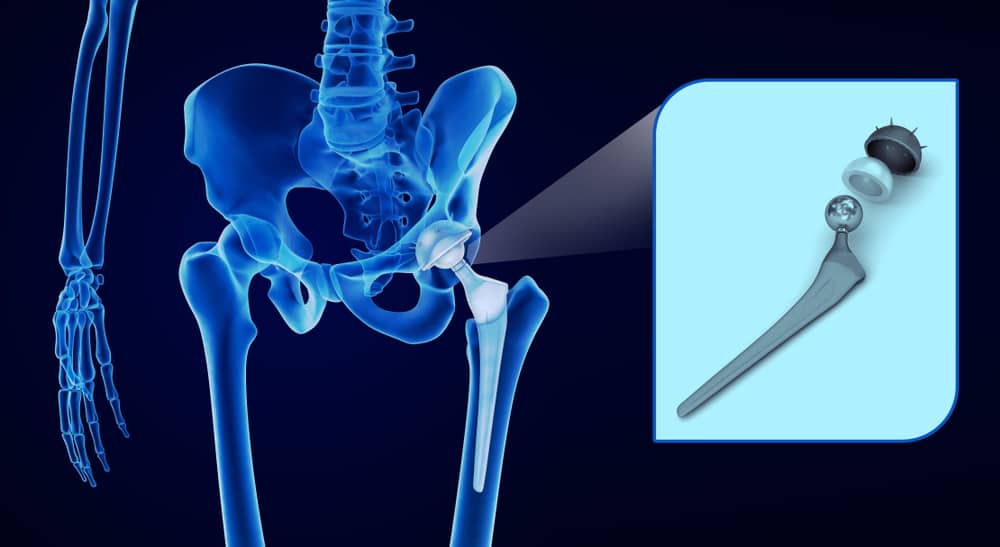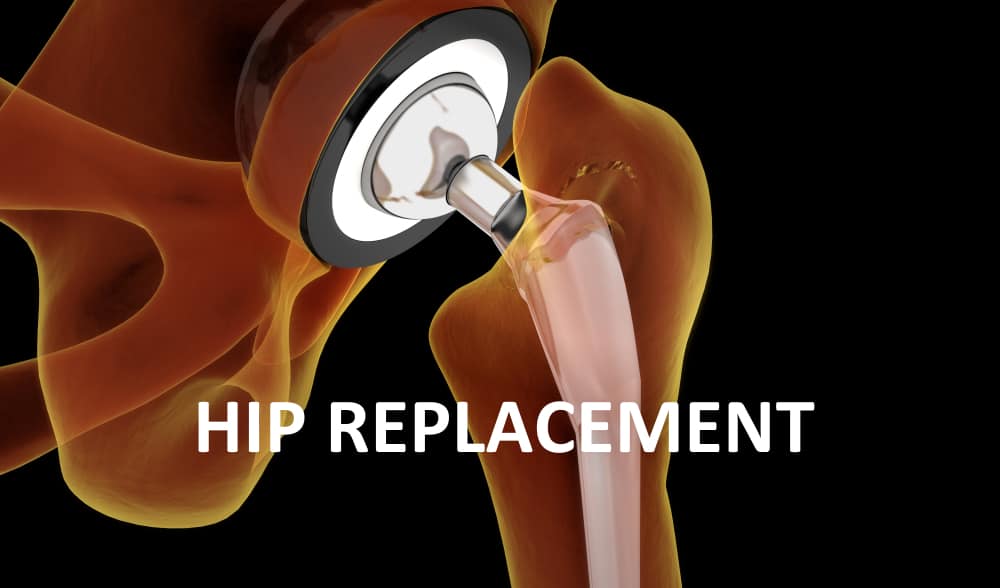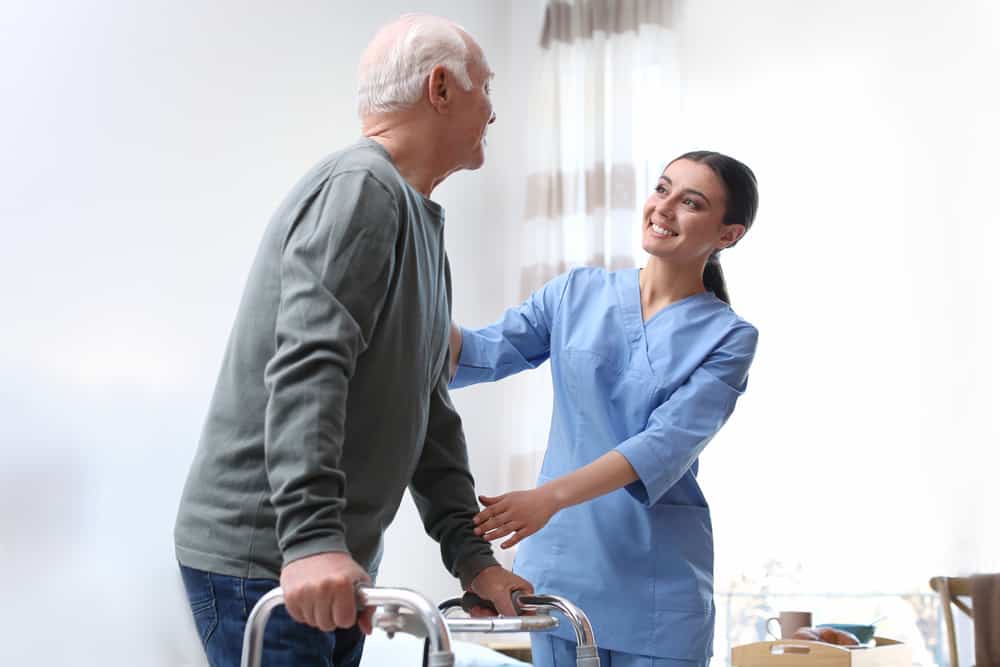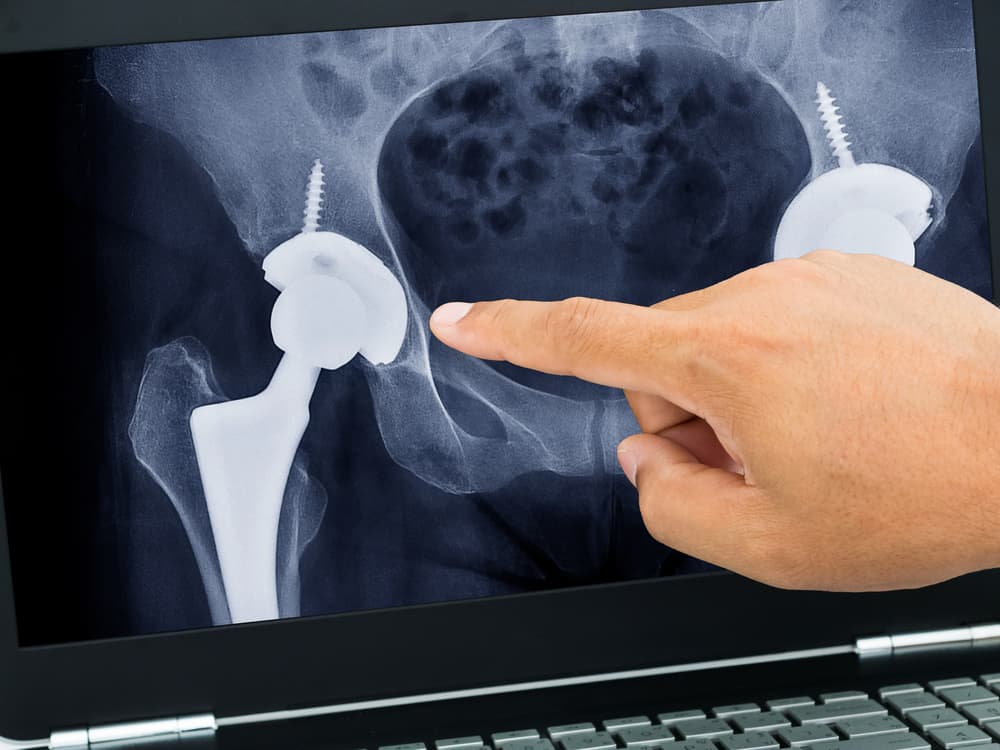Physiotherapy after hip replacement
Introduction
As we already know physiotherapy helps increase every individual’s mobility and make them independent in their daily tasks. There is a procedure called hip replacement after which you will need to see a physiotherapist to ensure it’s productivity. Physiotherapy following a hip replacement is really important for you as it ensures your new hip joint is in a more workable condition. It makes the pain go away and earns you the lifestyle you desire. To understand the forces behind the scenes let us understand how it works and what causes a hip replacement surgery.
Hip Replacement
Hip replacement is a surgical procedure used to address hip pain. It is also known as hip arthroplasty. Artificial implants are used to replace components of the hip joint during surgery. It consists of two component parts:
- A ball (at the head of the femur, commonly known as the thigh bone)
- A socket (in the pelvis, also known as the hip bone).
Together, they make up a hip joint. This is the most important joint as it provides support to the body in both static and dynamic states.
Hip replacement surgery types:
If you are experiencing pain in this joint either one or both of the parts of the hip joint can be replaced. During total hip replacement (total hip arthroplasty), both the ball and the socket are replaced. A partial hip replacement only replaces the ball (the head of the femur). The modern artificial hip joint is said to last for 15 years.
Who is considered for hip replacement procedure:
Anyone can be considered for hip replacement but the frequency is more between people of 60-80 years of age.
It is a major procedure and often it is recommended when physiotherapy or steroid injections have not helped the patient. Even then your health is their concern whether or not you will be able to bear with the surgery and its repercussions or not.
What causes a hip replacement to take place:
When the hip joint is worn or damaged, your mobility is limited, and you are in pain even when you are resting, hip replacement surgery is usually required.
The most common reason for hip replacement surgery is osteoarthritis. Other conditions that can cause hip joint damage include:
- rheumatoid arthritis
- hip fracture
- septic arthritis
- disorders that cause unusual bone growth (bone dysplasias)
Physiotherapy in this case will help you come back to your normal living.
Physiotherapy before a hip replacement

Physiotherapy before a hip replacement
Before surgery it is important to prepare yourself first. Staying active before your surgery will play an important role in your recovery after surgery. Hip physio exercises involve exercises to strengthen your hip joint. In the weeks and months leading up to surgery, walking and swimming are recommended to maintain your joint flexible and your muscles strong. It is also called pre-hab. Studies have shown it reduces the inpatient care after surgery upto 73 %. Hip physio exercises help you stay active and make your body moving just so that it does not lose its ability to move. If these exercises add to your pain ,then stop doing them. Most of these exercises you can perform from the comfort of your bed. Following are the exercises that are recommended by a physiotherapist to do before your hip replacement surgery in order to prepare yourself for it:
- Upper extremity exercises :
After your surgery you will mostly rely on your arms for your movement. The use of crutches or a walker would require you to have strong arm muscles to carry the weight of your body. For this purpose you will need to do some exercises beforehand to strengthen your arm muscles. These are given below:
- Bicep Curls
- Sit on your back in a chair, with an elastic band under your feet and both of its ends in your each hand.
- Start by pulling it to your shoulder’s length keeping your upper arms straight by your side.
- Stretch for some time , hold and then release it to its starting position.
- Do 10 repetitions, twice a day.
- Elbow extensions
- Sit on your back in a chair.
- Hold the elastic band in one of your hands(the resistance hand) tightly.
- Grab the other end of your band in the other hand and bend your arm.
- Now slowly pull the band by straightening the arm, while holding steadily with the other hand.
- Hold for sometime , then return to your initial position.
- Repeat 10 times for each hand.
- Lower extremity exercises:
Do at least 10 repetitions for each exercise to keep your hip muscles strong.
- Ankle Pumps
- Lie on your back straight.
- Bring your toes up towards yourself, flexing your feet.
- Then move them down, away from you, as if you are pressing on something.
- Do it at a quick, smooth pace.
- Gluteal Sets
- Lay on your back on the mat or in the bed.
- Tightly squeeze your glutes.
- Hold for 5 seconds. Then, relax.
- Heel Slides
- Slide your heel up toward your buttocks while maintaining your heel on the bed to bend your surgical hip and knee.
- Relax as you return your heel to the beginning position.
- Throughout the exercise, keep your kneecap pointing up toward the ceiling.
- Switch to the opposite leg and repeat.
- To make it easier to slide, place a plastic bag under your heel.
- Quad Sets
- Lay down on your back on your bed
- Place a rolled towel under your knee
- Push down into the towel roll, tightening up your quads (thigh muscles)
- Hold for five seconds
- Relax and repeat
- Switch to the opposite leg and repeat the exercise
- Bridge
- Lay down on your back on your bed
- Bring both feet up towards your glutes, so your knees are bent at about 90 degrees
- Keep your feet shoulder-width apart
- Place your hands flat down at your sides.
- Tighten your core, lift your hips toward the ceiling, and squeeze your glutes
- Hold for 5 seconds
- Relax and repeat
- Long Arc Quads
- Sit in a chair with your knees as far back as possible against the chair’s edge.
- Sit up straight with your chest out and shoulders back in a nice posture.
- Extend one leg straight up to the ceiling while maintaining the foot relaxed.
- Return to your starting position after five seconds of holding.
- Repeat the same for the other leg.
- Leg slides (abduction/adduction)
- Lie on your back.
- Keep your kneecap pointed, slightly slide your surgical leg out to the side.
- Then slide your leg back to the starting position.
- To slide it easily, use a plastic bag under your heel.
- Straight leg raises
- Lie flat on your bed.
- Bend your other leg with your foot flat on the bed.
- Raise your surgical leg up (about 12 inches), keeping your knee straight.
- Hold for 5 seconds. Slowly lower your leg down and relax.
- If you are unable to do this exercise lying down, you can also do it standing up.
After your surgery:
As you will undergo a major change in your body, it is normal for you to have pain initially in your body as your anaesthesia wears off. You will be given pain killers to help soothe it. Your movement will be initially very limited. Your doctor might advise you to put a pillow between your legs to help you maintain a stable position for your hip joint. Your nurse will help you with side changes and standing after your surgery.
Ankle mobilisations and simple quad and glute workouts are examples of exercises. Walking is also recommended, and you may be given a walking device (such as crutches or a walker) and told to bear as minimal weight in the beginning as possible stages of your recovery.
Physiotherapy after hip replacement
Physiotherapy makes an impossible feat possible. It blows life into worn out bones, joints and muscles. Likewise it has an important role in the recovery of your hip joint after its reconstruction. It is important for 4 reasons:
- It will help you achieve strength and flexibility in the concerned area muscles.
- It will not let your joints stay stiff and dormant that limits your usage of body which is not good at all.
- It will make your blood circulatory system work more effectively thereby, making it possible for you to heal faster.
- Because your hip muscles are weakened due to staying flat in bed all day long. Hip replacement physical therapy will help you combat that.
Your orthopaedic surgeon will advise you to see a physiotherapist for your recovery. A physiotherapist will recommend a few easy exercises that may help you in your healing process.
Your physiotherapist might suggest that you exercise for 20 to 30 minutes, 2 or 3 times a day during your early recovery. About 6 weeks from your surgery you will be able to do your exercises but still if you feel discomfort then do not continue further, without consulting your physiotherapist.
Physical therapy after hip replacement includes these exercises that are commonly recommended to the hip replacement patients are given below.
Early stages:
Swelling:
Swelling is something natural that happens during the healing process after getting wounded or if having any incision for treatment purposes. But staying longer than usual swelling will be threatening to your health. Therefore, it is important to keep it down. For this purpose your physiotherapist may advise you to do following things:
- To lie flat in your bed keeping your surgical leg at or above the level of your heart for upto 20 minutes.
- To place cold packs around your hip for 15 to 20 minutes at a time. Place a dry towel between the ice packs and your skin.
- Do 10 repetitions of ankle pumps and ankle rotation to increase blood circulation.
- It is important to slightly take steps towards increasing your out of the home activities but not so much to over burden your hip joints only to make it worse.
Early Postoperative Exercises
Strengthening:
To activate your weakened muscles you must do the following exercises to keep your muscles flexible and strong. Do 10 repetitions per exercise.
- Quad squeezes
The quadricep muscles are located at the front of the thigh and help support the hip joint:
- Lie on your back straight with legs extended
- Contract the quadriceps muscles at the front of the thigh
- During the contraction, the leg should be kept straight, so that it may seem the back of the knee is pressing down
- Hold for 5 seconds and release.
- No strain should be placed on hips
- Ankle pumps
This exercise will improve muscle mobility and circulation of blood.
- Lie down on your back with legs extended and ankle propped up on a towel or blanket.
- Flex your foot by pulling the heel away from your body and pointing your toes up and towards it.
- Hold the position for 5 seconds.
- Point toes away from the torso, heel towards the calf
- Hip abductions
In this exercise you need to move a limb away from your body.
- Lie down on your back with your legs stretched out.
- Maintaining the affected limb’s straightness and toes pointed upward, move the leg to the side, away from the body’s centerline.
- Return the leg to its original position (not past it—angling the leg inward puts the hip at risk of dislocation).
- Keep the opposite leg straight and stretched.
- Repeat several times.
- Glute squeezes
Glutes are located at the back of the hip joint and are normally called buttocks. They help support the hip joint.
- Lie on your back with legs extended
- Squeeze the buttocks, contracting the gluteus muscles
- Hold for 5 seconds and release
- They can strengthen the muscles here without straining hip joints.
- Knee Extensions
For this exercise one needs to sit in the chair to perform them well.
- Raise the foot and extend the knee until the leg is straight
- Hold for 5 seconds
- Slowly lower the foot until it rests on the floor again
- Heel slides
These exercises engage the muscles of thighs and glutes altogether.
- Lie on your back straight with extended legs position.
- Flex the new hip and knee, bringing the knee off the bed and sliding the foot down the bed.
- Keep the other leg straight.
- Hold for 10 seconds.
- It improves the range of motion of the patient.
- Straight leg raises
- Lie on your back straight.
- Bend the leg that hasn’t been operated on so that the knee is up and the bottom of the foot is on the floor.
- Make the operated leg flat against the bed by straightening it.
- Raise the straightened leg to the ceiling, toes pointing up. Heel should be 3 to 6 inches off the bed .
- Lower the leg gently to the bed.
This is not an exhaustive list of exercises. In reality, there are a plethora of hip and leg strengthening exercises that may be beneficial to hip replacement patients. An orthopedist or physical therapist can design an exercise regimen that is specific to the demands of each patient.
Walking:
You might be suggested after your surgery to move frequently and walk around to recover fast. Despite this, you won’t feel much depression as it is a form of meditation often suggested by psychologists as well. Initially they might offer you to walk with the help of some aids like crutches or walkers. It is important to walk and carry out your activities. A physiotherapist will help you do this by:
- Walking around your home using a front-wheel walker, crutches or a cane (assistive walking device) your therapist instructed you to use.
- Walking with the “heel-toe” pattern that your therapist taught you (to help keep you from walking with a limp).
- Gradually increasing the distance you walk.
Advanced Exercises and Activities
As for your complete recovery and movement of your hip joint you will have to wait for months. You can only strengthen your muscles and make your surgery even more resourceful by working consistently towards your goal. For this you will need to do these exercises after you are at a point where your swelling and discomfort are no longer there to bother you. These exercises should be done in 10 repetitions, 4 times a day.
- Resistive Hip Flexion
- Stand with your feet slightly apart.
- Put one end of the elastic band around some stationary object such as heavy furniture and other around the ankle of your operated leg.
- Move the operated leg forward against the band’s resistance keeping the knee straight.
- Hold for some time then let it return to its original position.
- Hold any chair or table in front of you for balancing your body.
- Resistive Hip Extensions
- Stand straight while holding on to your chair.
- Face the furniture or door to which the elastic band is attached at one end.
- Now slowly move your leg back straight to which the other end is attached.
- Release to allow your leg back to its original position.
- Repeat the same a number of times.
- Resistive Hip Abduction
- Stand straight sidewise.
- Now extend your operated leg in the same sidewise position parallel to the object to which the elastic band is attached.
- Hold for 5 seconds and release.
- Allow to return to the normal position.
- Exercycling
- It is the most muscle strengthening exercise.
- Adjust the seat height to the point where your bottom foot just touches the pedal and your knee is practically straight.
- First, pedal backwards. Ride forward only after a comfortable rearward cycling motion has been achieved.
- As you become stronger (at about 4 to 6 weeks) slowly increase the tension on the exercycle.
- Exercycle for 10 to 15 minutes twice a day, gradually building up to 20 to 30 minutes, 3 or 4 times a week.
How soon will the pain go away?
Since the epicenter of the pain is your hip joint, if that is replaced then you won’t feel the pain from the joint itself but the pain will be from the wound you get in the process of it. You will feel pain because of the major surgery you have undergone but that will not linger for long.
Your orthopedic surgeon will advise your nurse to either indirectly or directly give you painkillers. During the first 3 days you will be under observation and they will give you these medicines every now and then. Even then after 1 or 2 weeks if you still feel pain then you should see your doctor because it means you are under the influence of any infection or inflammation.
If you are having your hip physical therapy sessions then you will come out of this pain phase in 1or 2 or 12 weeks time.
Is there anything I should look out for or worry about?
If you notice any redness, fluid or pain in your new joint then you should immediately report to your general physician or orthopaedic surgeon.
Moreover, you should specifically look for blood clots as they might be a major risk factor after hip replacement surgery.
Stroke, heart attack, arrhythmia, and pneumonia are not very common among patients after hip replacement surgery.
How long will it be before I feel back to normal?
There is no specific time span to decide upon your back to normal routine. It is different for different people and may involve a number of factors to be taken into consideration. It may include:
- Your pain tolerance
- Your age
- Your general health and fitness
- Your routine activities
- The condition of your muscles and joint
- Your will power
All these factors may affect your ability to get back to normal. If your normal activities include light activities like walking, or office based work on your laptop or computer where you are mostly sitting in the chair etc, then it will be easy for you. For most people they can return to their routine in 3 to 6 weeks time. For some it may extend upto 6 to 10 months .
Initially it is advised not to do heavy weight lifting activities, skiing or riding where there is a risk of falling.
When can I drive again?
You can get into driving after 6 weeks of your hip replacement surgery, as it is not easy to enter the car and exit it without support. A little carelessness can put you at risk of dislocation or may be a car accident because it is not as easy as it seems. But if you have recently undergone the surgery then it is a big no no for you. Even your physiotherapist might not suggest it.
When can I go back to work?
As it is already mentioned, it depends on what type of job or work you go to. Usually people can get back to work in about 3 months or more if your work is home based or sitting on a laptop or call center employee etc.
How will it affect my sex life?
If you were having trouble with sex before due to pain, you may discover that having the operation improves your sex life. , your surgeon can counsel you on w hen it’s safe to have sex again
You should be able to have sex after 6 to 8 weeks if you’re careful. Avoid more extreme positions and aggressive sex.
Looking after your new hip
Since it is not something natural you cannot completely be carefree of its artificiality. You will need to take good care of your new hip because your life depends on it for your daily life activities. You do not want to rupture it because it is something man made and can easily be worn out. You will be advised by your surgeon to :
- Do not swivel on the ball of your foot
- When you turn around, take small steps
- Do not cross your legs over each other
- Do not force your hip or do anything that makes it feel uncomfortable
- Avoid bending your hip more than 90° (a right angle) during any activity
- Avoid twisting your hip
- Do not apply pressure to the wound in the early stages (try to avoid lying on your side)
- Avoid low chairs and toilet seats (raised toilet seats are available)
- Avoid lifting the leg to put on a sock and much more.
Avoiding falls
To avoid further complications it is important to avoid falls because it may potentially harm your new hip that you have been fancying this whole time.
In the first few weeks you will be given crutches, cane or walker to walk with the support of it and to avoid falls.
Walking carefully along the stairs , kitchen or bathroom is especially necessary as these are the most common places where one might fall easily even at home. You may slip out and that slip can become your worst nightmare. So it is better to protect yourself before it is too late.
You might prevent falls in a number of ways:
- Immediately mopping up spillages
- Removing clutter, trailing wires and frayed carpet
- Wearing comfortable shoes that don’t slip
- Using well lit rooms, staircases and passages
- Avoid bumping into things
- Making sure you manage all your tasks at one portion of your home and don’t use stairs much
- Mats that slip
- Getting help for things which you can not safely do on your own
Conclusion
Hip replacement procedure is not as simple as it might seem and so you need to take care of everything ten times more than the way you used to do because this time you are relying on your functionality upon a man made device. It will only mimic the natural function of that joint which was out of order prior to surgery. Hence nothing works and in the worst case scenario your doctor might have suggested you to go for this procedure. Once you have undergone it, never let your muscles go weak in that area. Physiotherapy then becomes crucial both for your muscles and joints in that area where surgery has been performed. Also to make sure no blood clots form you need to make sure you are doing all that is required of you so that you can return to what you used to do before your surgery.
I hope this article has benefited you in some way possible. You will get the best support from us here . We are open to your queries!
How can you book an appointment?
We aim to see you within 24 hours so contact us to make an appointment or to find out more information on how we can help you, please call us on 07515280990 or email us primephysiocareluton@gmail.com. We are one of the best clinics whose physios are registered with HCPC, CSP and Physio first as well have enormous experience.
FAQs
Is physiotherapy necessary after hip replacement?
For rehab to work it is really important to have physiotherapy sessions. It is recommended to patients to have a minimum of 6 week physio for hip replacement. Now people also have pre-hab sessions before their hip replacement procedure to ensure better recovery.
How long does it take to walk normally after a hip replacement?
Depending on each individual’s health, age and fitness, some walk pretty early than others. Most patients can walk and resume their life activities in the time span of 3 to 6 weeks.
How long does it take for bone to grow into hip replacement?
If the prosthesis isn’t set in place, it will take four to six weeks for the femur bone to “grow into” the implant for the hip joint to be able to bear full weight and walk without crutches. It can take up to three months for bone material to grow into a new joint component.
How far should I be walking 4 weeks after hip replacement?
You will be able to walk as much as the way you have been consistent with your home physio programme. You will recover fast. As a result you might walk up to 1 mile (2-3 city blocks), resting in between with short intervals as needed.
Is life normal after hip replacement?
As long as you take proper care of yourself, you will be able to enjoy normal work, sex life and to other activities even after a hip replacement.



